How Wide To Straddle Your Legs In A Pancake - 2 Considerations

The purpose of this article is to provide 2 considerations for determining the proper straddle width in your pancake training.
The pancake. A beautiful position that demonstrates superior characteristics in the body. Flexible hamstrings and adductors, strong and mobile hips, and even freedom of movement in the lower back muscles. It's a phenomenal position seen across a plethora of sports such as Jiu-Jitsu, gymnastics, hand balance, pole dance, cheerleading, and many more. This makes the pancake a highly sought-after position to learn and one question that regularly gets asked is "how wide should we straddle our legs in a pancake?".
How wide should we straddle our legs in a pancake?
Before we can answer the question, we first need to ask ourselves, "why are we training the pancake?" Understanding the answer to this question will allow us to make strategic decisions on the straddle width of our pancake as well as how to train it. Below I provide two important considerations for determining the ideal straddle width as well as explain the relevance of straddle width to the straddle and stalder press to handstand.
1) It's Up To You
The first and simplest consideration is that it's always up to you. If the reason that you're training the pancake is simply that you desire to do so, that's very valid! In a situation like this, how wide we open our legs doesn't matter. We can open as narrow or as wide as our heart desires. Your body, your straddle!
But even in this situation, it's good to understand the difference between a narrower straddle and a wider straddle. This will allow you to make a strategic choice on which path you'd like to take or if you'd like to work both at the same time.
Narrow Straddle
A general guideline for a narrow straddle is a hip angle of about 60-100 degrees. Each person's hip angle will be unique, but you can get an idea from the picture below showing a 73-degree hip angle in my hanging straddle leg raise.
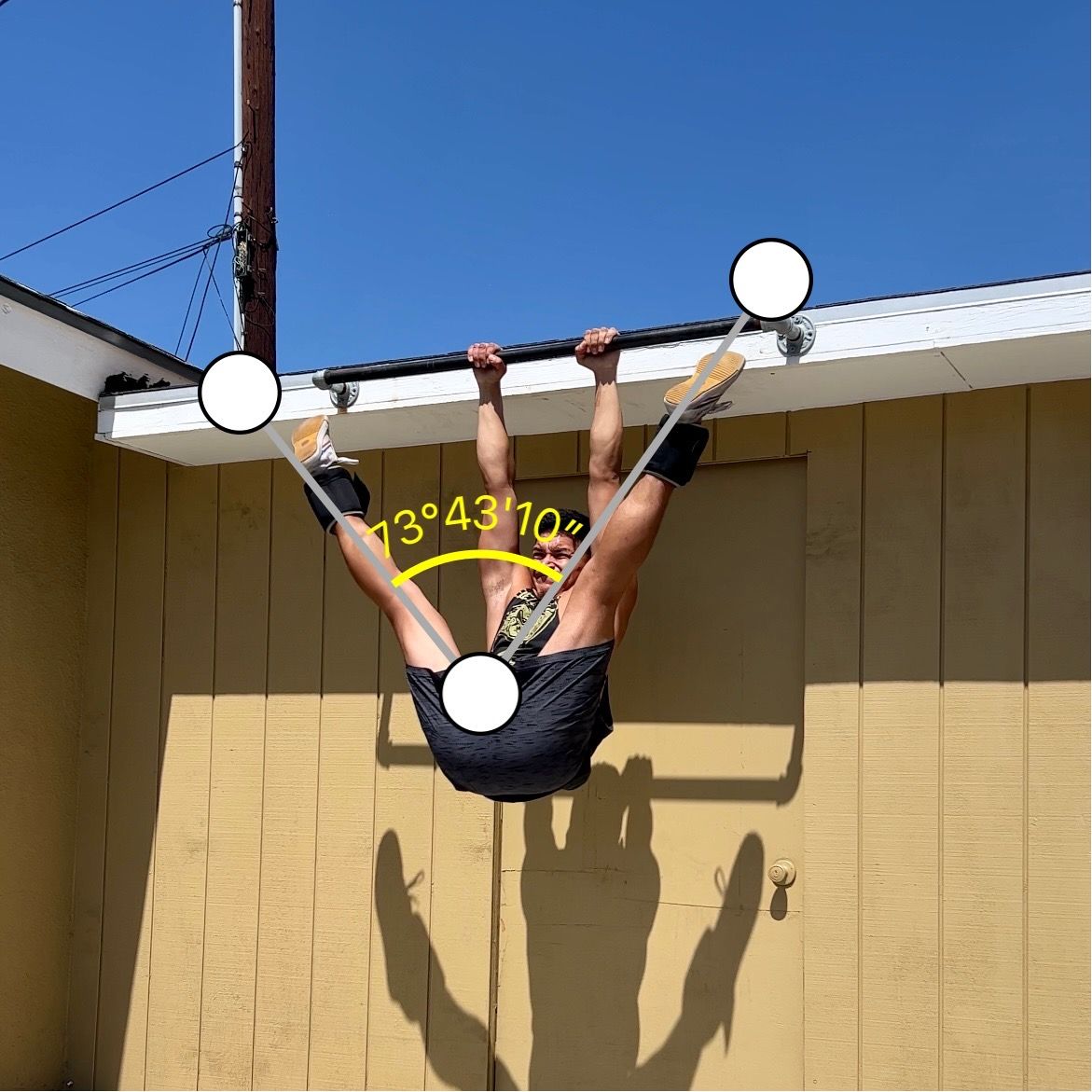
The legs will be somewhere not too far outside of shoulder width. The narrow straddle has more hamstring involvement and less adductor involvement than the wider straddle. Since there's less hip abduction, the narrow straddle will also have a lower demand on the glutes.
Wide Straddle
The wide straddle is a straddle with the legs open to a hip angle of about 100-150 degrees. This is a much wider straddle. You can see the picture below where I'm performing a very wide straddle front lever and the hip angle is about 130 degrees.
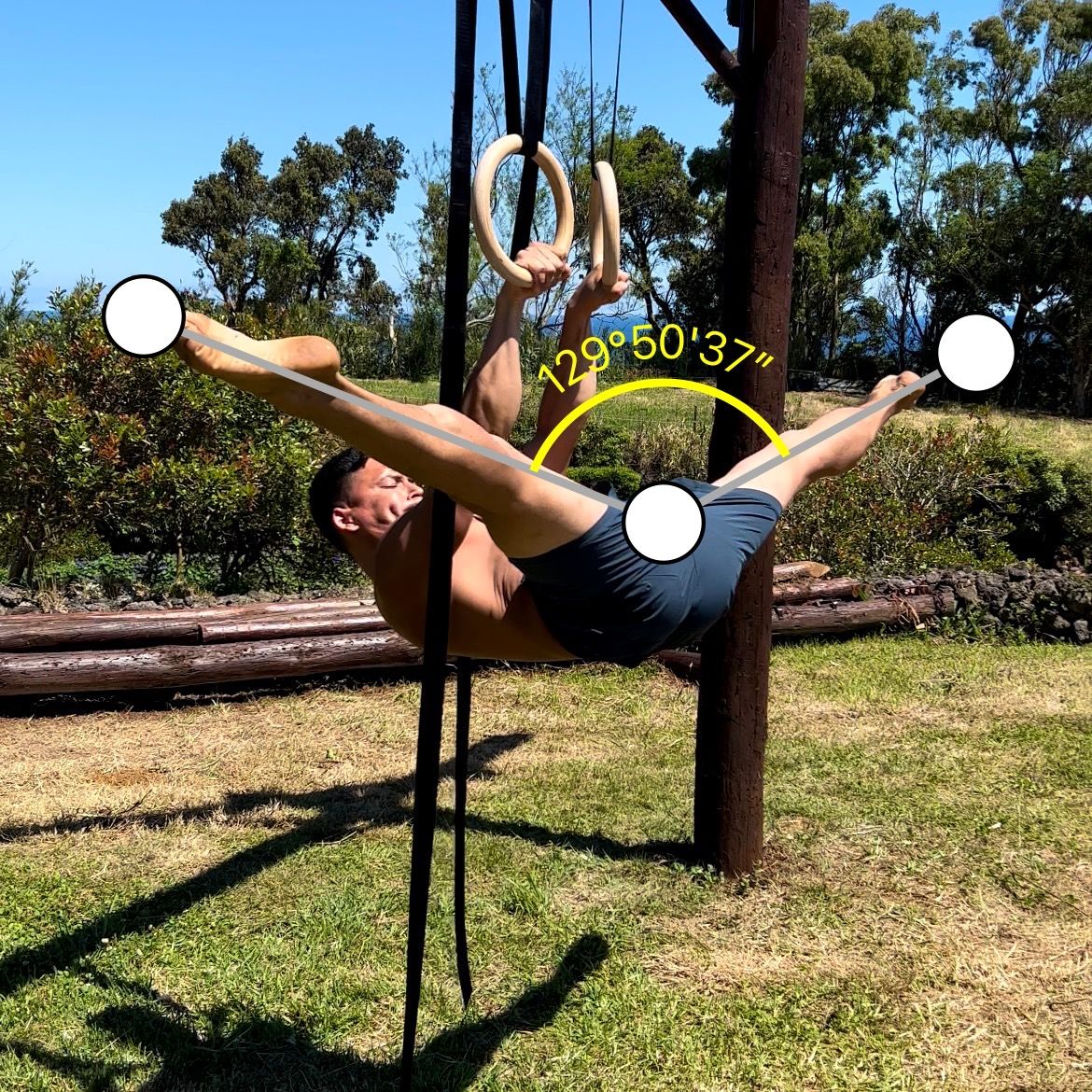
As the legs continue to open, in a pancake, there will come a point where the legs start to internally rotate. The knees and feet start to turn inward and it becomes much more like a middle splits than a pancake. Eventually becoming an epic swim-through. Great topic for another day! This is a much different straddle and we aren't referring to that one here. The next picture is a great example of the straddle that I'm describing above.
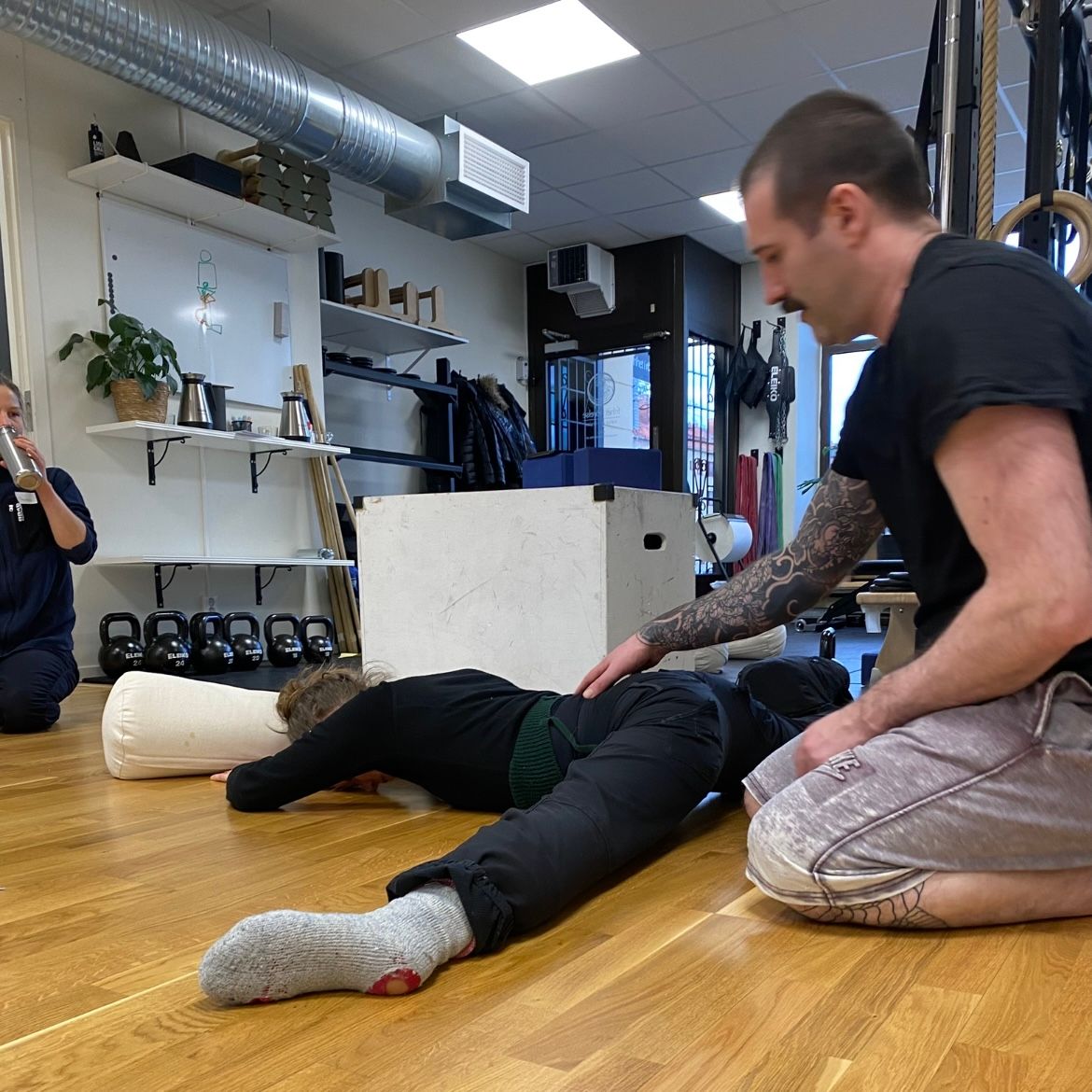
For the purposes of this article and the pancake, we'll be referring to, we want to limit the upper end of our hip angle to about 140 degrees.
2) It's Skill Dependent
The second most important consideration in determining straddle width is the skill that you are training for and how you will be using the pancake in that skill.
Below are a few pictures of skills that utilize the range and compression of the pancake.

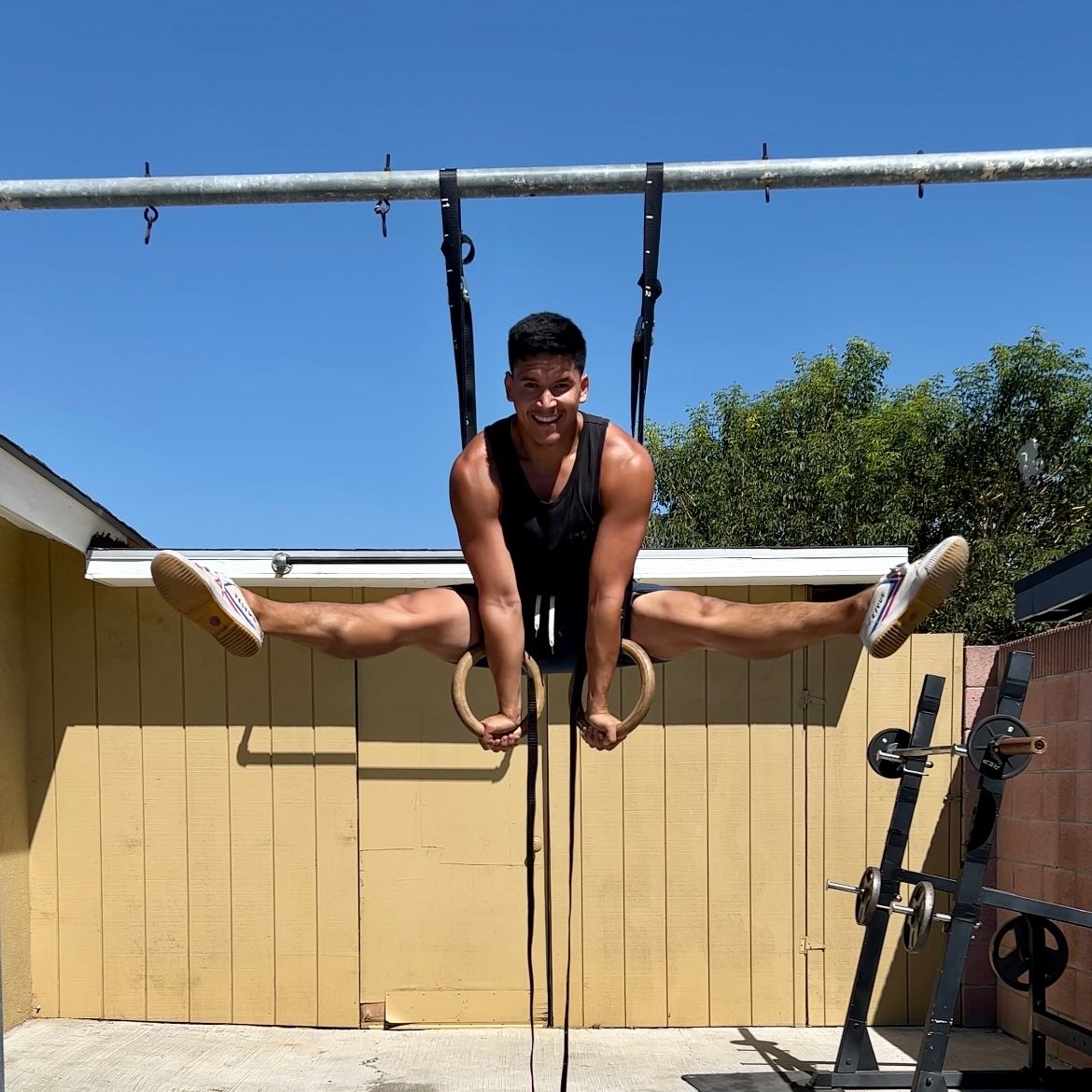

Let's think about it in relation to the straddle press to handstand and the stalder press to handstand since that's the primary reason that I've worked on my pancake and the primary reason that my students train their pancake range.
Straddle Press
In the straddle press, we first see the pancake emerge at the very start of the press once the feet have lift off. As soon as the feet come off the floor it's important to straddle the legs wide and get into a pancake shape. A wide straddle here distributes our center of mass laterally and creates a shorter lever than in a pike press where the legs are further from the body. This reduces the intensity of the press and is why a straddle press is easier than a pike press. The wider the straddle here, the easier it will be to press. This is also because a wider straddle gets the legs out of the way of the torso and allows a stronger compression between the torso and lower body.
Since a wider pancake on the concentric makes the straddle press easier, you may think the best idea will be to train your widest straddle, however, there is a limit to how wide the legs can straddle in this heavily compressed press position. I would have a hard time getting into a straddle of 130+ degrees like the one I showed in the front lever or the straddle splits from the M3 workshop mentioned above.
My recommendation for pancake width in relation to the straddle press is to go with a wide straddle but don't push it. Comfy straddle in the 80-120 degree ballpark. A good rule of thumb is to sit in your pancake and open your legs to the point that your hands can still touch the outside of your feet and the legs are still in front of the body with knees pointing up.
Stalder Press
With the Stalder press, the situation is slightly different. Here, we begin in a highly compressed straddle L-sit, like in the bottom left picture. You can see in the straddle L-sit that my legs are just slightly touching my arms. They aren't resting, just grazing my arm hairs as my hip flexors do the work of keeping the legs parallel to the ground.
To initiate the stalder press, we need to lean forward and begin to lift the hips high into the air. Now we have a choice, to straddle the legs maximally or keep them roughly in the same position as in the straddle L-sit.
If we were to straddle our legs as wide as possible, as we begin to press and articulate the spine, the legs will cross the arms sooner than if the legs were straddled less, and would be positioned more along the side of the body, the transverse plane, rather than in front of the body, in the sagittal plane.
Whereas if we kept our legs at roughly the same width as in the straddle L-sit, we would have more of our legs in front of the body as the press unfolds and articulates. Having the legs in front of the body as the press is in motion acts as a counterweight and reduces the demand. Emmet Louis does a great job at explaining this on his pancake episode #10 of the Bendability Podcast.
Personally, I find that keeping my legs at the same straddle width as I perform the stalder press, feels the most comfortable. Sometimes I find that I can even narrow the width even more as the feet pass the arms, this has the effect of helping to get the hips even higher and makes the stalder feel a bit less heavy. But you can see in the bottom right-hand picture that I'm back to about a 90-degree straddle width. For me, this is a rough hip angle that allows me to get as much compression as possible.
My recommendation for pancake width in relation to the straddle press is to find the width of your legs in a straddle L-sit and train your pancake using that width for the majority of your training. Maximize your pancake flexibility AND compression strength at this straddle width.
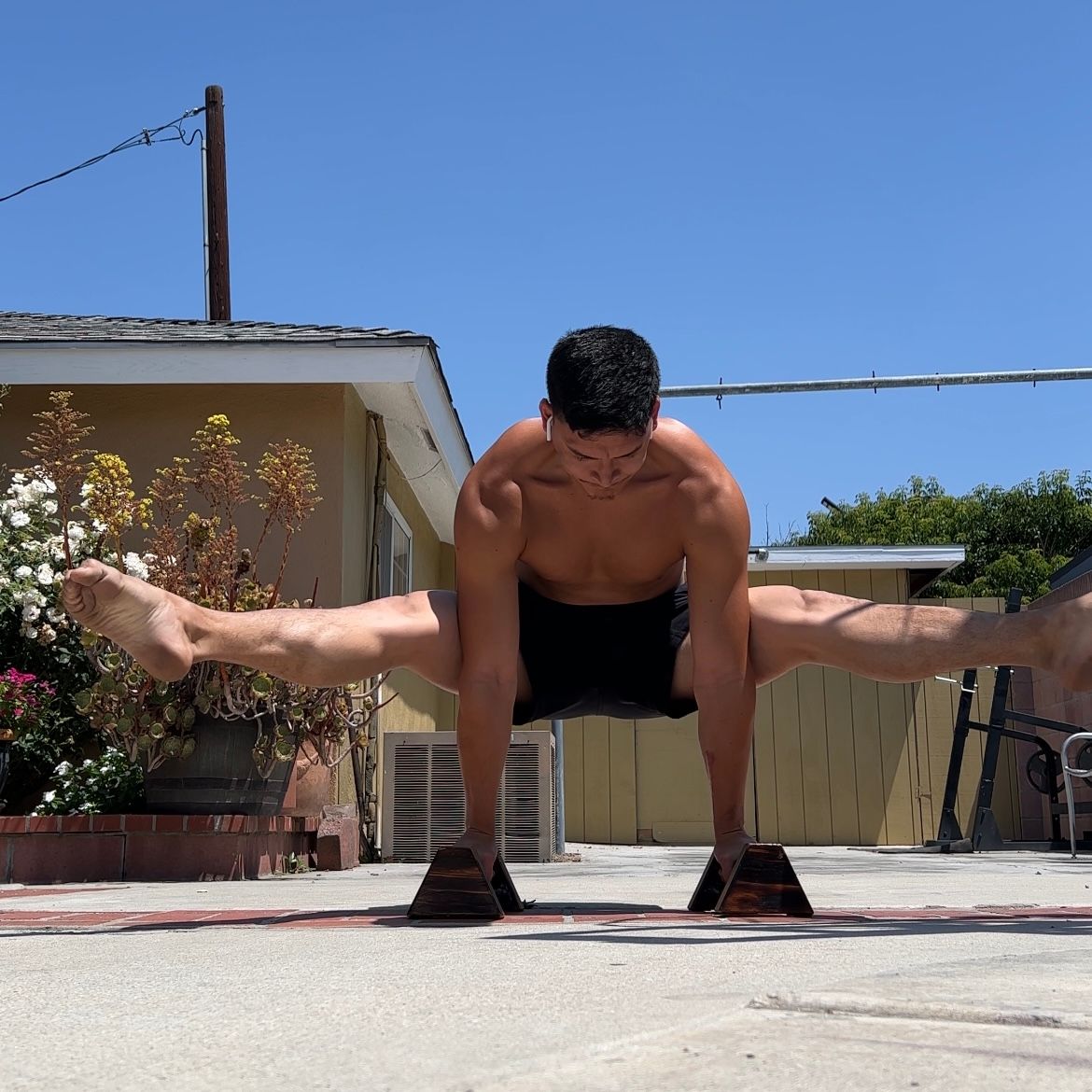
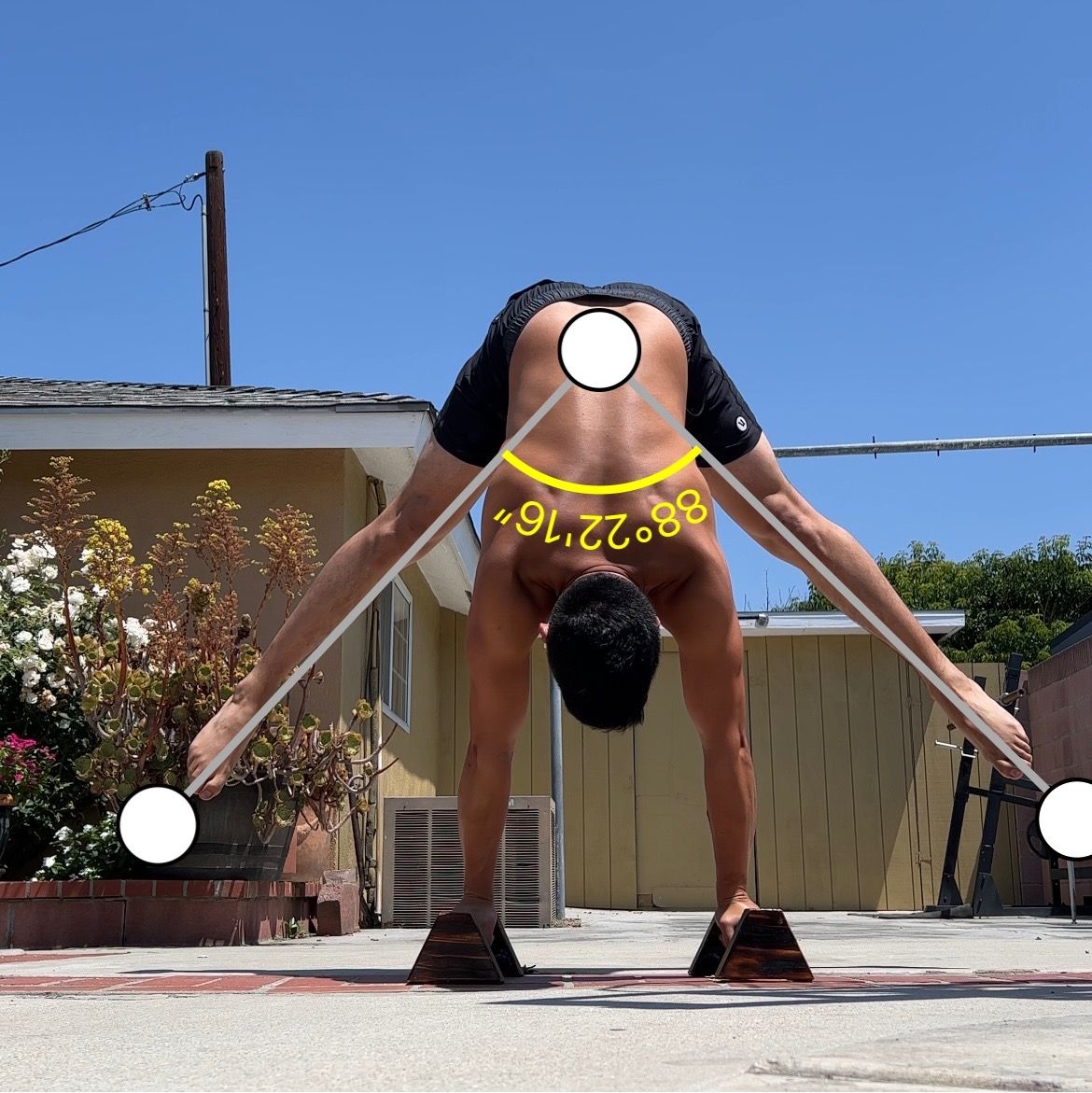
Conclusion
Overall, when it comes to determining the ideal width of your legs in a pancake, there are two important considerations. One consideration is that it's always up to you. It's your body and your skill and can be executed in any way that you like.
The second and often the most important consideration is that it is skill specific. How we set up the pancake in our stretches should be dictated by the application of our pancake. Think about your sport and consider the angle that you would like to be able to get into. This is the angle that you're going to want to spend the most of your time training. In the stalder press to handstand, you want to use a width that allows your legs to touch your arm hairs when sitting in a straddle L-sit.
But that's not to say don't train different straddle widths. This is just a more logical and strategic approach to determining straddle width. But at the end of the day, for complete mastery of the lower limbs, it would be wise to train your pancake at a variety of leg widths.
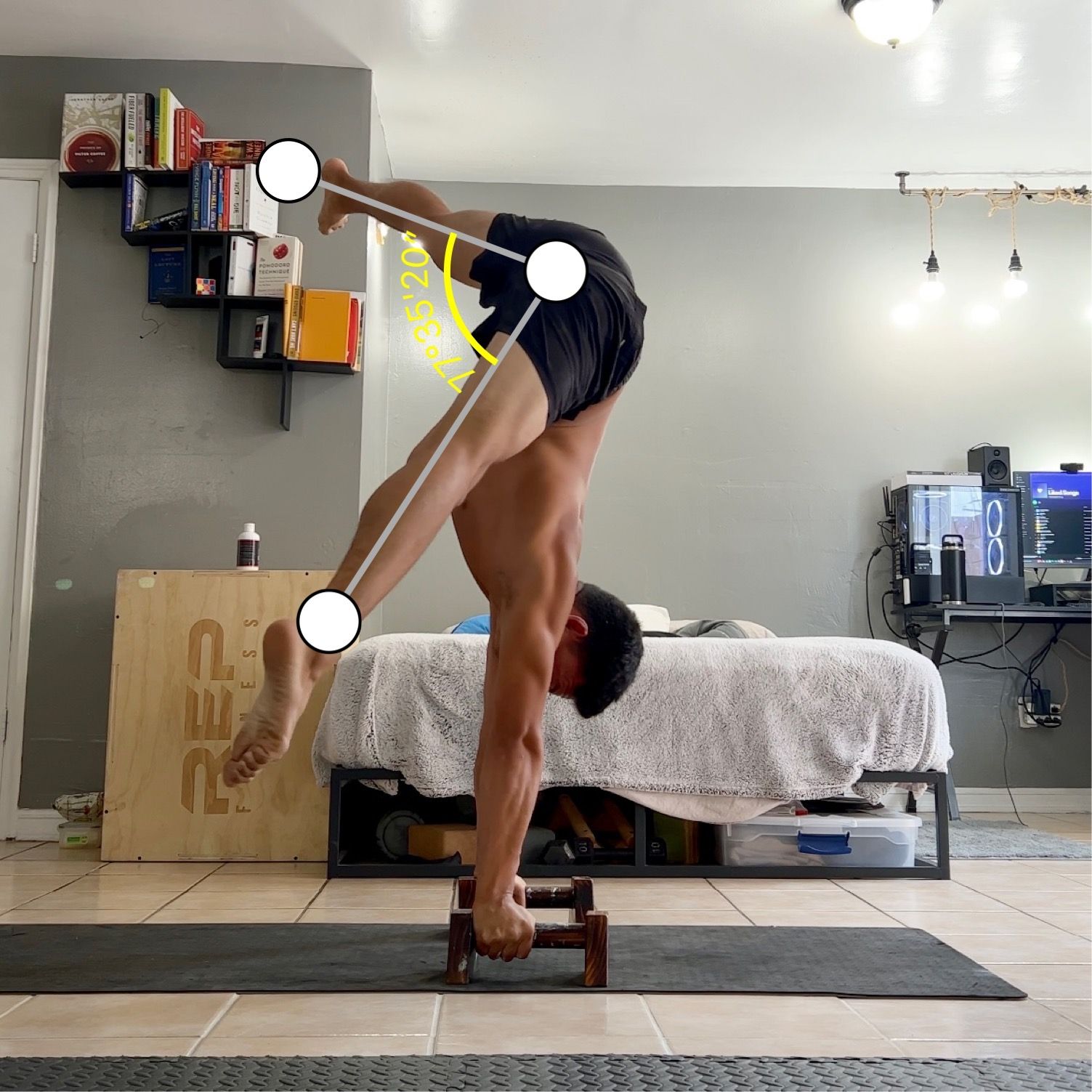
If you enjoyed this article, I encourage you to subscribe to my weekly newsletter, The Sunday Spread, where I share free resources, training tips, discounts on my coaching services, student highlights, as well as my personal interests like podcasts, books, and worthwhile videos. You can sign up by hitting the button above!






